| Share |  |
 | |||
Got Milk? Should You Drink It?
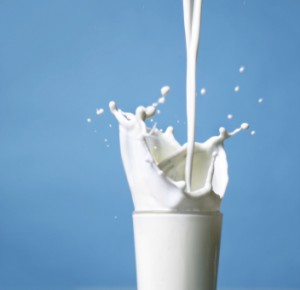 Milk and dairy products make up a significant part of the typical American diet. Most people would be hard pressed not to include foods like cheese, ice cream, yogurt, butter and cream in their daily diets. In addition to these common foods, proteins, fats and sugars from cow’s milk are extracted and used in various processed foods to add flavor or texture.
Milk and dairy products make up a significant part of the typical American diet. Most people would be hard pressed not to include foods like cheese, ice cream, yogurt, butter and cream in their daily diets. In addition to these common foods, proteins, fats and sugars from cow’s milk are extracted and used in various processed foods to add flavor or texture.
People raised in this country are conditioned to regard milk as highly nutritious and essential for healthy bones and teeth. The prevalence of this premise is not surprising considering the enormous influence the dairy industry exerts through public education, massive advertisement and Congressional lobbying efforts.
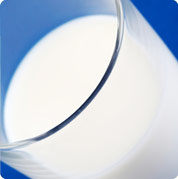 Is Milk the Perfect Food?
Is Milk the Perfect Food?
Promoted as the “perfect food,” cow’s milk is readily supplied to school children everywhere through government-sponsored school lunch programs. For years people were taught about dairy as one of the four basic food groups, and even the more updated FDA Food Pyramid guidelines recommend three cups a day as a daily serving (interestingly enough, some of the experts responsible for creating the Food Pyramid have integral ties with the dairy industry).
Based on the latest research, however, many nutritionists, scientists and medical doctors alike recognize that dairy consumption often provokes allergic reactions and is a contributing factor in a number of conditions and diseases, affecting children and adults alike. Even a renowned scientist of clinical medicine like Dr. Walter Willet, head of nutrition at Harvard’s School of Public Health, strongly believes that recommendations proposed by the Food Pyramid concerning milk consumption are not based on key scientific findings about health.
 Many of the following symptoms or conditions have been linked to the consumption of processed milk.
Many of the following symptoms or conditions have been linked to the consumption of processed milk.
- Gastrointestinal symptoms (colic, abdominal cramps, gas, diarrhea, constipation, and G.I. bleeding)
- Respiratory symptoms (mucus production in lungs and sinuses, colds, chronic coughs, ear infections, sinusitis, asthma)
- Skin symptoms (rashes, acne, eczema)
- Increased risk of certain cancers (hormones in cow’s milk increase levels of IGF-1, known to stimulate the growth of normal and cancerous cells. Breast, prostate, and other ”hormone-dependent” and other types of cancer are linked to excess levels of IGF-1 hormone in milk from modern commercial dairy farms)
- Children’s symptoms (colic, rashes, iron deficiency anemia, bed wetting, ear infections and other respiratory symptoms from allergies (see my article “Food Allergies—Could Dairy Be Your Problem?”)
In many cases, milk—at least the kind found in most grocery stores today—may just not be the “perfect food” or healthiest option for us, or our loved ones, to consume on a regular basis.
For Cows or Humans?
For calves, milk is indeed nature’s perfect food. By God’s design, all milk contains the saturated fats, protein, calcium and other nutrients in the perfect ratios to meet the nutritional needs for the young of that species, until such time as they are able to digest other types of food. It’s actually quite simple when you stop to think about it: human milk (i.e. breast milk) has just the right nutrients for a baby and cow’s milk has the perfect nutrients for raising a baby cow. As you can see from the table below, the nutritional composition of the two milks is quite different.
|
|
Protein |
Fat |
Lactose |
Minerals |
|
Human Milk |
0.9% |
4% |
7% |
0.2% |
|
Cow’s Milk |
3.4% |
3.6% |
4.6% |
0.7% |

Protein from cow’s milk is poorly assimilated in the body since it is a different composition from human milk. A calf will double its birth weight in 45 days drinking higher protein cow’s milk but a baby, who takes closer to 180 days to double its birth weight, needs less than half that amount of protein.
Another interesting point to consider is that only human beings continue to drink milk past the time of weaning. After childhood, the majority of people become deficient in lactase (an enzyme needed to digest lactose, the sugar in milk) and lose the ability to digest milk well, which further suggests that milk was not intended for consumption into the adult years.
Concerns About Calcium
People often worry that they will be calcium deficient if they don’t drink milk. The fact is that the alteration of vital proteins, along with a lack of active enzymes that occurs from the pasteurization process, prevents a great deal of the calcium and other minerals in milk from being absorbed. More assimilable forms of calcium may be obtained from foods such as leafy green vegetables, meats, seafood, nuts, beans and seeds (as a side note, phytic acid in grains, nuts and seeds may impair calcium absorption but soaking them before eating neutralizes that effect).
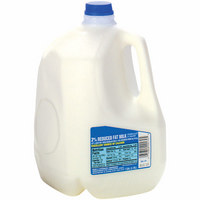 Although cow’s milk does contain four times the amount of calcium as human milk, the infant receiving human milk actually absorbs more calcium into their system. According to Dr. Frank Oski, former director of the Department of Pediatrics at John Hopkins University School of Medicine, the ratio of calcium to phosphorus needs to be at least two to one or better in order for humans to efficiently absorb calcium. The ratio in human milk is approximately 2.35 to one, in cow's milk only 1.27 to one. The high amount of phosphorus in cow’s milk combines with calcium in the human intestinal tract to form mono-calcium phosphate. This substance is nearly impossible for humans to digest and only serves to bind and prevent the absorption of calcium. Excess calcium that cannot be properly digested, absorbed or excreted creates a host of problems in the human body, too numerous to address in this article.
Although cow’s milk does contain four times the amount of calcium as human milk, the infant receiving human milk actually absorbs more calcium into their system. According to Dr. Frank Oski, former director of the Department of Pediatrics at John Hopkins University School of Medicine, the ratio of calcium to phosphorus needs to be at least two to one or better in order for humans to efficiently absorb calcium. The ratio in human milk is approximately 2.35 to one, in cow's milk only 1.27 to one. The high amount of phosphorus in cow’s milk combines with calcium in the human intestinal tract to form mono-calcium phosphate. This substance is nearly impossible for humans to digest and only serves to bind and prevent the absorption of calcium. Excess calcium that cannot be properly digested, absorbed or excreted creates a host of problems in the human body, too numerous to address in this article.
Although most people think they need to consume high amounts of dairy products to prevent osteoporosis, the reality is that rates of osteoporosis are much higher in those who consume a lot of dairy since the high phosphorus content of the milk actually leaches calcium from the body. It is no wonder that people in countries who consume the least amount of dairy have the lowest rates of osteoporosis.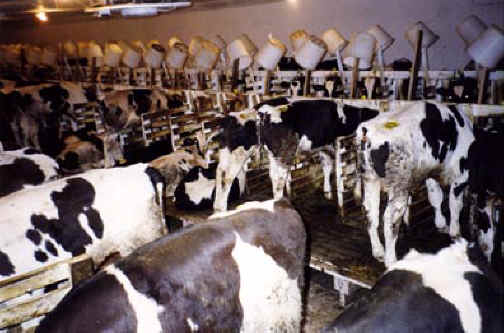
God’s Design is Best
Aside from the fact that milk intended for baby calves may not contain the best type or ratio of nutrients for human needs, the degree to which modern production processes alter milk makes it an even less healthy option. Coming from a natural health perspective, I view any alteration by man of God’s natural design problematic, since I strongly believe His design is best.
Cows were intended to be outdoors in the sunlight and fresh air grazing on grass in pastures. Even though traditional dairy farms still exist (though they continue to dwindle in number) the majority of commercial milk production takes place in what is known as “factory” farms (for more information on factory farms, visit www.factoryfarming.org).
In order to produce the maximum amount of milk at the lowest possible cost per animal, cows are confined in crowded pens where they are fed diets of corn, soy (genetically modified) and factory wastes. Synthetic growth hormones are often given to increase milk production, which end up in the milk along with the stress hormones the cows produce in reaction to being hooked up to milking machines for unnatural lengths of time while living in a confined state.
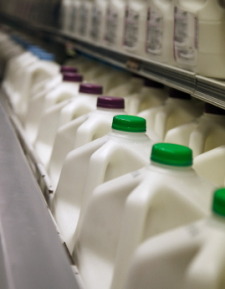 The Problem with Pasteurization
The Problem with Pasteurization
Keeping cows in cramped unsanitary conditions results in the spread of disease, leading to the use of antibiotic medication that infiltrates the milk supply as well. Because of the problem of disease, the process of pasteurization was instituted after tuberculosis and E Coli outbreaks in the 19th century to avoid the spread of bacterial infection in the milk supply. It was considered a cheap alternative to dealing with sanitary inspections and regulations. In truth, unclean raw milk was the problem, not raw milk itself.
Pasteurization is a process that subjects milk to high temperatures to kill disease-carrying bacteria and prevent souring in order to extend shelf life. Ultrapasteurization uses much higher heat so that milk lasts even longer—up to two to three months versus the two to three weeks regular pasteurization provides.
While this process claims to kill 95-99% of pathogenic bacteria, it also alters or destroys many amino acids, making milk proteins harder to digest, which can then trigger allergies more easily. In addition, it destroys or diminishes the majority of naturally occurring heat sensitive enzymes, essential fatty acids, important vitamins and beneficial bacteria, essential for preventing germs from multiplying quickly. Granted, some of the vitamins like A and D are added back in to “fortify” the milk but synthetic forms do not have the same effect nor can the body utilize them effectively.
 The Effects of Homogenization
The Effects of Homogenization
Another way milk is altered is homogenization, a “cosmetic” process created to disperse fat molecules through milk evenly so they remain in suspension rather than rising to the top as thick cream. The problem with this process is that the high pressure used to pump the milk through narrow tubes breaks the milk fat into such small particles that xanthine oxidase, an enzyme in milk referred to as XO, is directly released into the blood circulation. These enzyme particles, which are normally digested in the stomach and excreted, create lesions in artery walls. The body then reacts to the damage by producing plaque and causing cholesterol deposits to settle on the artery walls, which gradually leads to a thickening known as arteriosclerosis (a heart and circulatory disease).
While the end result of pasteurization and homogenization appears to be a pure white bacteria free substance, the fact remains that these unnatural processes alter the molecular and nutritional properties of milk in ways that adversely affect the health of the body.
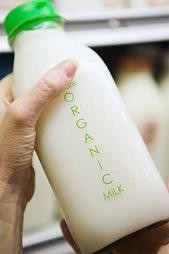 Are There Natural Options?
Are There Natural Options?
Fortunately, organic dairy farms do exist where cows are still raised in the great outdoors and allowed to feed on grass (pesticide free, no less, which protects our bodies potentially from 300 harmful chemicals in regular milk). Not only are these cows treated more humanely but the conditions under which the milk is produced are more sanitary and disease free. The biggest plus is that cows raised organically are not treated with any artificial hormones to increase their milk production nor are they given antibiotics while in the milking herd.
Organic milk still contains the same basic proteins, sugars, and saturated fats as regular milk and undergoes the same processes of pasteurization and homogenization. In fact, organic milk is generally “ultra” pasteurized, meaning its shelf life is longer (generally by 20-30 days) than most regular milk.
What About Raw Milk?
Raw milk generally is from cows raised in a similar manner to cows on organic dairy farms. The biggest difference is that raw milk is completely natural and does not go through any artificial processes to alter or denature its properties. Those who decry the consumption of raw milk are convinced that it may contain bacteria, but raw milk proponents insist it is totally safe if produced under clean conditions and promptly refrigerated since it possesses many anti-microbial and immune-supporting components to fight off pathogenic bacteria.
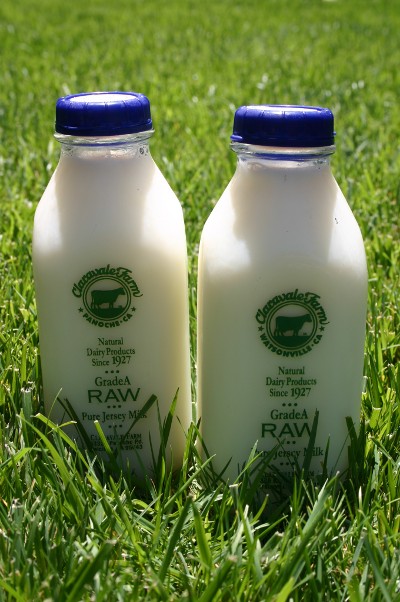 The owner of the largest raw milk dairy farm in California conducted various tests on raw milk from his farm and regular pasteurized milk sold commercially. Since he never received any reports of illness from people who drank the milk from his farm, he was curious to see what would happen if the raw milk was exposed to dangerous bacteria. In one test, he injected E. coli, listeria and salmonella in both types of milk. The result was that the pathogens grew larger and spread throughout the pasteurized milk as there were no enzymes to stop their growth. However, none of the pathogens survived in the raw milk due to the anti-microbial bacteria and naturally occurring acids contained in it.
The owner of the largest raw milk dairy farm in California conducted various tests on raw milk from his farm and regular pasteurized milk sold commercially. Since he never received any reports of illness from people who drank the milk from his farm, he was curious to see what would happen if the raw milk was exposed to dangerous bacteria. In one test, he injected E. coli, listeria and salmonella in both types of milk. The result was that the pathogens grew larger and spread throughout the pasteurized milk as there were no enzymes to stop their growth. However, none of the pathogens survived in the raw milk due to the anti-microbial bacteria and naturally occurring acids contained in it.
Because raw milk possesses all of the valuable digestive enzymes (including lactase) and promotes the growth of healthy gut bacteria, it is far more digestible and may even aid digestive health. Unlike pasteurized milk, the beneficial fats (omega-3 and CLA) in raw milk are not degraded by heat. No synthetic vitamins (which may be toxic to the liver) are added, plus its naturally higher vitamin and mineral content is absorbed and utilized by the body in a greater way due to the presence of the butterfat in its natural form.
Currently, raw milk is only legally available for sale at retail stores in ten states. In another 29 states, it can either be purchased legally directly from farms, through cow-share programs, for pet food or by virtue of the fact that no law exists concerning herd shares (meaning it is possible to obtain it through a cow share program). Eleven states still do not allow for any legal sale of raw milk. To learn more about how and where to obtain raw milk, visit www.realmilk.com, sponsored by the Weston A. Price Foundation (www.westonaprice.org).
Concluding Thoughts
The topic of milk and dairy products is a highly debated and controversial one represented by several different schools of thought. Though you may not be in agreement with all of the information and theories presented in this article, I hope it has at least made you aware of some possible health concerns associated with the consumption of standard commercially produced milk. I would also hope that you would seriously consider switching to organic or raw milk if you plan to continue consuming cow’s milk.
For more recommendations concerning options for other types of milk and dairy products that can be substituted for cow’s milk, I would suggest that you read my article “Food Allergies—Could Dairy Be Your Problem?” in this same issue, which contains information to help people who may need to go “dairy free” because of food allergies, or who want to cut back on or eliminate dairy for reasons of health.
Sources:
- The Guide to the Dairy Free Diet by David Brownstein, M.D. & Sheryl Shenefelt, C.N.
- Go Dairy Free by Alisa Marie Fleming
- Don’t Drink Your Milk by Frank A. Oski, M.D.
- http://www.rinf.com/columnists/news/cow%E2%80%99s-milk-not-healthy-for-humans http://www.keepwell.com/homogenization.htm
- http://www.westonaprice.org/
- http://food-facts.suite101.com/article.cfm/consume_raw_milk_or_almond_milk#ixzz0pX6ZbTaZ http://proliberty.com/observer//20000208.htm
- http://www.emagazine.com/view/?4047
Copyright © 2008-2015 Lucinda Bedogne, CNHP, CNC
Reader Comments...
| 2011-07-16 17:37:03 "Make your life more simple take the loans and everything you require. " - Alison |
Post Your Comment...
|
|
||||||||||||


